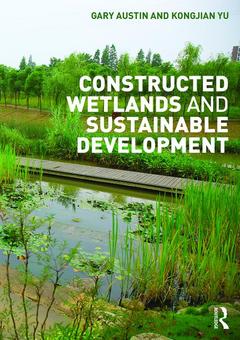Description
Constructed Wetlands and Sustainable Development
Authors: Austin Gary, Yu Kongjian
Language: English
Subjects for Constructed Wetlands and Sustainable Development:
Keywords
Horizontal Subsurface Flow Wetland; Free Water Surface Wetlands; wetland ecology; Horizontal Subsurface Flow; integrated natural and human systems; Subsurface Flow Wetlands; constructed wetlands; Vertical Subsurface Flow; multi-functional systems; Gary Austin; ecosystem services; Treatment Wetlands; stormwater treatment; Vertical Subsurface Flow Wetland; Water Resource Planning; Free Water Surface Treatment Wetland; Vertical Flow Wetland; Free Water Surface; Reed Canary Grass; Subsurface Flow; Hybrid Wetland; Conventional Wastewater Treatment Plants; Government Work Product; Hydraulic Loading Rate; Koh Phi Phi; Vertical Subsurface; Horizontal Flow Wetland; Bio-retention Basin; Water Quality Storm; Canna Indica; USDA Hardiness Zone
Publication date: 08-2016
· 17.4x24.6 cm · Paperback
Publication date: 08-2016
· 17.4x24.6 cm · Hardback
Description
/li>Contents
/li>Readership
/li>Biography
/li>
This book explains how with careful planning and design, the functions and performance of constructed wetlands can provide a huge range of benefits to humans and the environment. It documents the current designs and specifications for free water surface wetlands, horizontal and vertical subsurface flow wetlands, hybrid wetlands and bio retention basins; and explores how to plan, engineer, design and monitor these natural systems.
Sections address resource management (landscape planning), technical issues (environmental engineering and botany), recreation and physical design (landscape architecture), and biological systems (ecology). Site and municipal scale strategies for flood management, storm-water treatment and green infrastructure are illustrated with case studies from the USA, Europe and China, which show how these principles have been put into practice.
Written for upper level students and practitioners, this highly illustrated book provides designers with the tools they need to ensure constructed wetlands are sustainably created and well manage
1. Water and Sustainable Urban Design, 2. Wastewater Characteristics, 3. Free Water Surface Constructed Wetlands, 4. Horizontal Subsurface Flow Treatment Wetlands, 5. Vertical Subsurface Flow Treatment Wetlands, 6. Hybrid Constructed Wetlands, 7. Plants in Constructed Wetlands, 8. Riparian Wetlands, 9. Stormwater Management and Sustainable Development, 10. Increasing the Sustainability of Agriculture, 11. Treatment of Industrial Effluent in Constructed Wetlands, Appendix
Gary Austin is the author of Green Infrastructure for Landscape Planning (Routledge 2014). He is a landscape architect who studied under John Lyle and taught at the California State Polytechnic University, Pomona, USA. He has practised in the public and private sectors and has taught landscape architecture at the University of Washington, USA, and the University of Idaho, USA. His teaching and research focus on community revitalization, urban biological diversity and treatment of wastewater and stormwater for water quality improvement.
Kongjian Yu is co-author of the influential book The Art of Survival (2007). He is Visiting Professor of Landscape Architecture at Harvard University, USA, and the principal of Turenscape, a large landscape architecture firm in China. The many constructed and monitored wetland projects that his firm has designed appear in this book. He is also Professor and Dean at Beijing University, China.
These books may interest you

Wetland TechniquesVolumes 1-3 158.24 €



